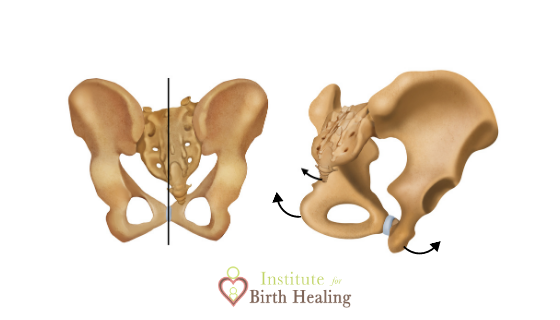All the Effects of Birth on the Pelvis
All the Effects of Birth on the Pelvis
The pelvis is the doorway the baby comes through to be born. We all know it happens, but have you ever thought about what actually happens to the pelvic bones after birth? We just assume they go back to their normal position. But, I’ve found that sometimes they do and sometimes they don’t. Let me share with you all the things I find in my client’s pelvic bones after a vaginal birth.
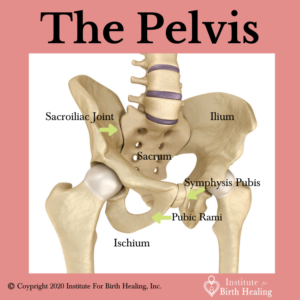
The bones of the pelvis are actually 3 different boney structures held together by the sacroiliac joints in the back and the pubic joint in the front. We name certain parts of these bones different names even though they are one congruent bone.
Pubic Bones
The symphysis pubis joint are the bones in the front of the pelvis we call our pubic bones. There are two of them that come together and have cartilage between them making it a joint. The pubic bones widen during birth to help make space for the baby to come on through.
Going inferiorly and laterally from the pubic bone is the pubic rami bone on either side. The rami bone joins into the ischial bones, or ischial tuberosities as some people call them, otherwise known as the sit bones.
After birth, I have found a common birth pattern in the left side pubic bone and rami bone. They seem to get more pressure on them as the baby comes on through. As most babies enter into the pelvis with their nose facing to the right, this makes the larger part of the baby’s head coming through on the left side. This accounts for the harder feeling I find on the left side of these bones. This dense bone is less springy than normal bone.
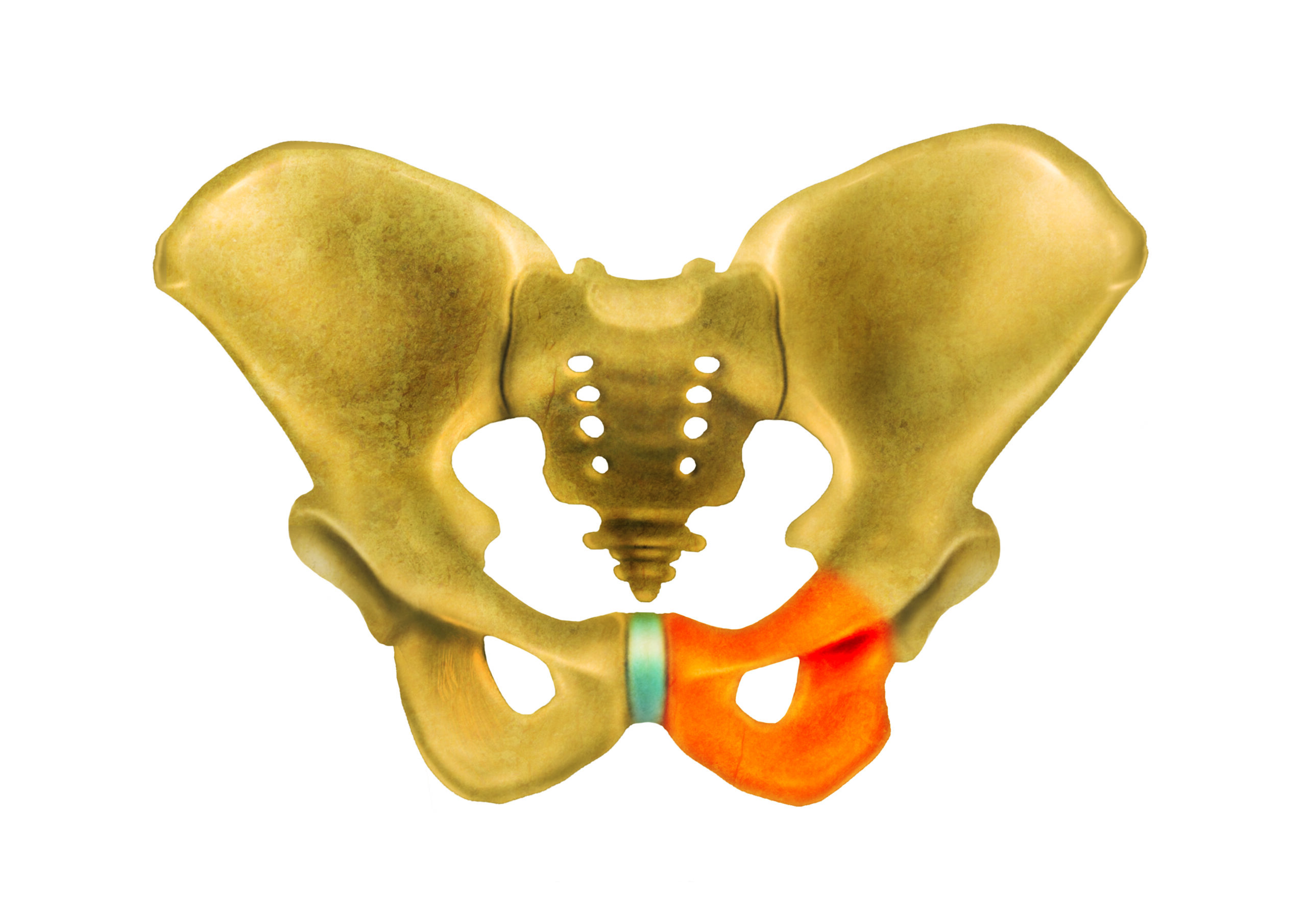
This hardness in the bone causes the tissues that attach to these bones to become activated. Left adductor muscles attach into the pubic and pubic rami bones and can have increased tension and tone in them post-birth. Massaging these tight muscles helps for a day but then the tension comes back because the bone hasn’t been addressed. When you release the hardness in the bone, the muscles can remain soft and relaxed.
Sacrum and Tailbone
The sacrum is the triangular bone between the two ilia bones. This junction creates the sacroiliac joints or SIJ. The sacrum is the hinge for birth and the tailbone, or coccyx is at the tip of the sacrum. The top of the sacrum, the sacral base, needs to first move back to allow the baby’s head into the pelvic inlet. At the same time, the tailbone is moving into the pelvic outlet. Once the baby’s head hits the pelvic floor muscles then the bones do the opposite motion. The tailbone moves backward and the sacral base moves forward. This helps open up the pelvic outlet for the baby to be born.
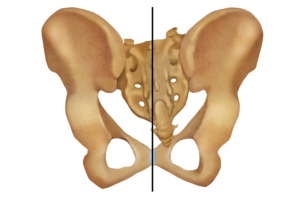
What I’m finding post-birth is the sacrum also gets jammed up more on the right side of the pelvis. The sacral base is higher on the right-hand side than the left. This decreases the mobility of the sacrum to move in the SIJ which can lead to low back pain. There are two techniques I teach in my Holistic Treatment of the Postpartum body course for practitioners to help them get the sacrum back into its normal midline position. These techniques relieve a lot of low back complaints after birth.
Open Birthing Pelvis
The last issue I find after birth is that the ischial bones don’t always find their way back to their original position. The sit bones need to splay apart for the baby to exit the pelvis. A lot of times, depending on the mom’s position when the baby comes out or asymmetrical tension held in the pelvic floor muscles, one ischium will be more splayed out to the side than the other.
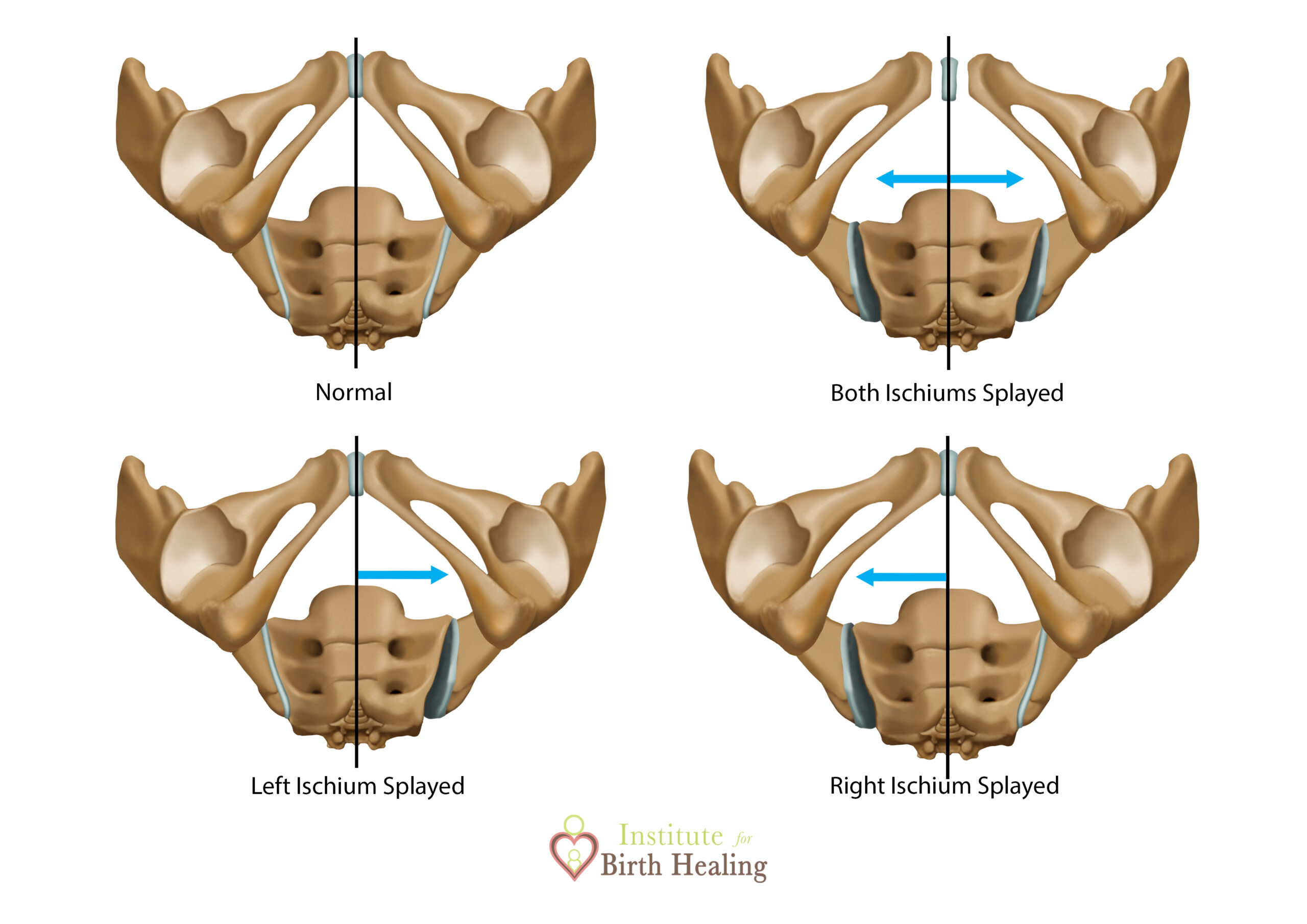
Or I also find that both ischia are further apart than they should be.

This open birthing pelvic pattern puts a ton of tension on the pelvic floor muscles, not allowing them to contract as strongly as they could. This can lead to pain with intercourse, a greater potential for pelvic organ prolapse, pelvic or low back pain, and a greater chance for pelvic pain in a subsequent pregnancy when you didn’t have any in your first pregnancy. Helping to bring the bones back to midline after birth is critical for overall pelvic health and core strength.
One other pattern I’ve found is when the entire pelvis has been widened apart. I find this by feeling for the PSIS’s, the bumps in your low back, and noticing how wide apart they are and if they are lacking mobility to the midline when compressed. The ischial bones will also be splayed apart more evenly side to side. Moms may find their old pants don’t fit anymore as their pelvis is wider than prior to pregnancy.
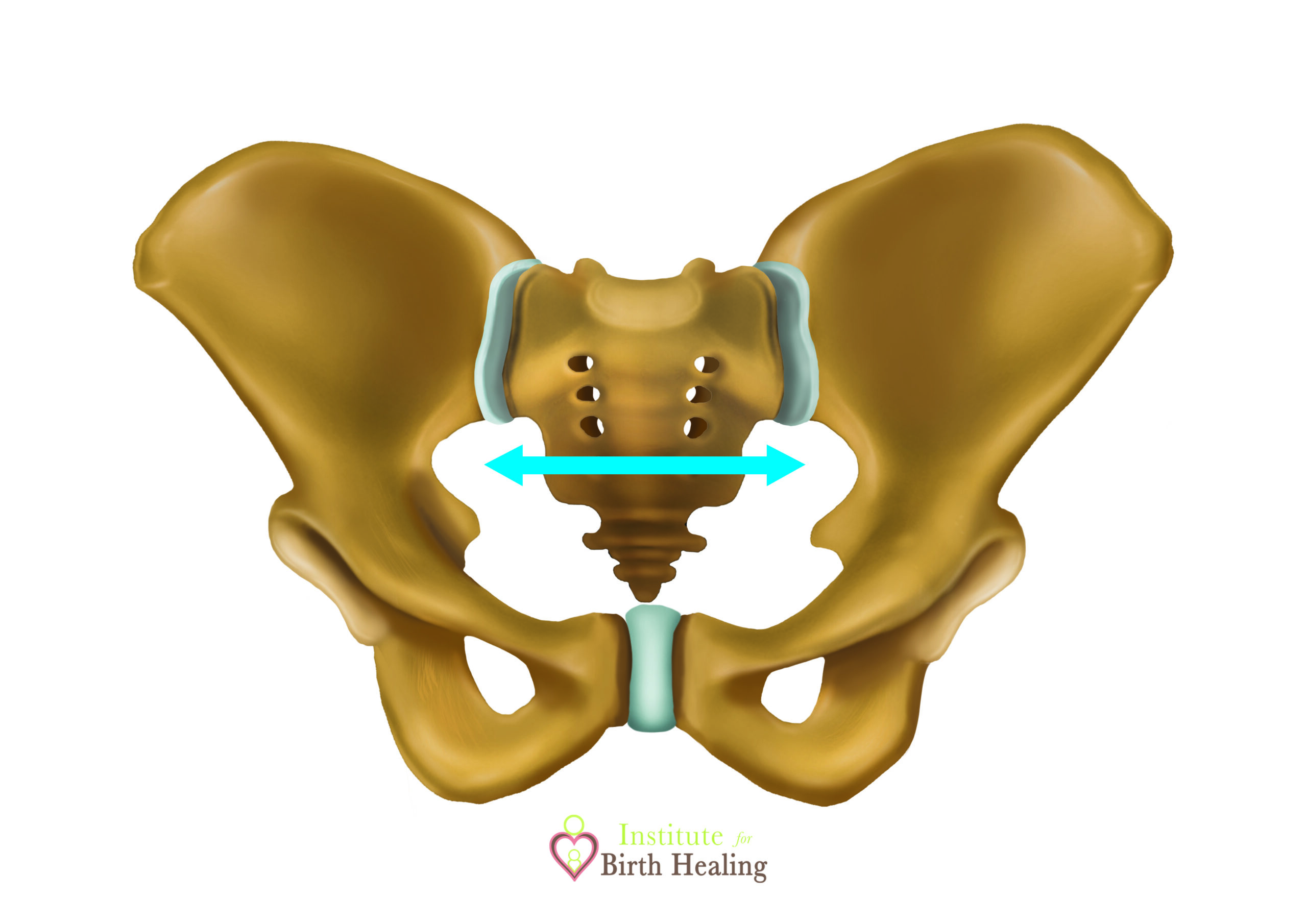
Helping to get the bones back into their proper place and release any hardened bone in the pelvis can help moms feel more like themselves after birth. Plus, all the muscles can work a whole lot better making them feel stronger and more put back together.

